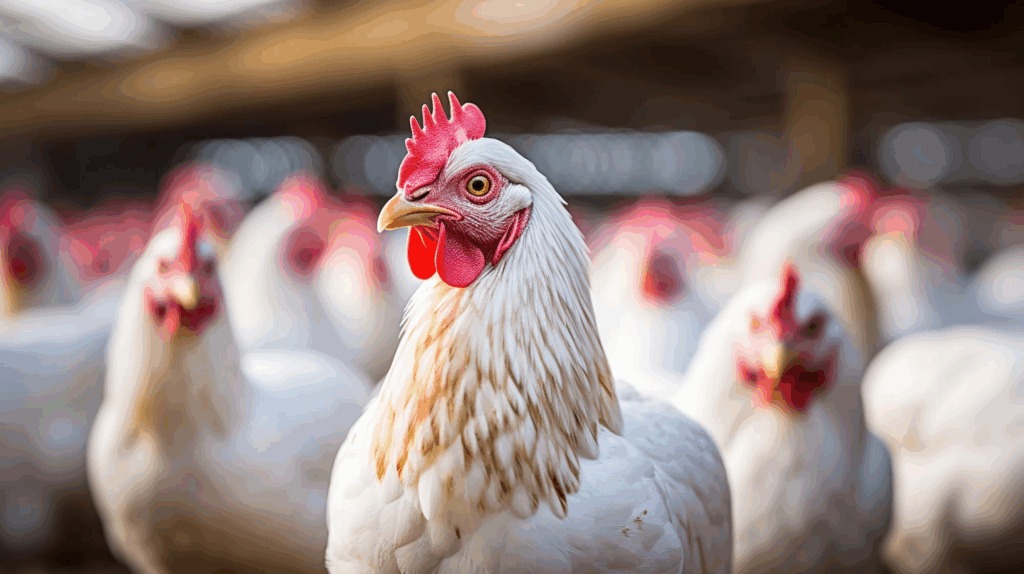As bird flu spreads uncontrollably on American farms, top health experts have warned that the US is on the verge of another epidemic.
Bird Flu Outbreak Hits U.S. Farms and Raises Human Health Concerns
Nearly 1,000 U.S. dairy cow herds have been affected by the H5N1 bird flu outbreak, and over 70 human cases—including the first confirmed death—have been reported.
Scientists from the Global Virus Network (GVN) warn that the American poultry industry is at serious risk, particularly in areas with dense farming operations and limited access to protective equipment for workers.
Since 2022, the outbreak has led to the culling of more than 168 million birds, contributing to rising egg prices across the country.
Experts are especially concerned about the virus mutating. If two viruses infect the same host, they can swap genetic material—a process called reassortment—which could make human-to-human transmission more likely, though it hasn’t happened yet.

The GVN is urging governments worldwide to ramp up surveillance and enforce stricter biosecurity protocols to contain H5N1. They’re also warning nations to prepare for potential human-to-human spread to avoid a repeat of the early confusion seen during the COVID-19 pandemic.
“Prevention efforts should focus on improving farm biosecurity and educating the public on safely handling poultry and avoiding contact with sick animals,” said Dr. Peter Palese, a leading flu expert and GVN director.
Another GVN director, Dr. Ab Osterhaus, added that a vaccine could help control the spread, especially with the virus now circulating among mammals. He called for urgent research into managing infection in cattle and using vaccines to protect herds.
Monitoring where animals and humans interact is also key, he said, noting that current surveillance isn’t enough to support solid prevention strategies.
Earlier this year, concerns arose that the incoming administration might cancel a $590 million federal contract awarded to Moderna to develop a bird flu vaccine. Reports also say the White House Office of Pandemic Preparedness and Response (OPPR)—created after COVID—has been underfunded and understaffed since the Trump administration. Some critics argue that pandemic planning has become more secretive since it was moved under the National Security Council.
In January, the U.S. recorded its first bird flu death: a man over 65 in Louisiana who had contact with sick backyard birds. Health officials say he had underlying conditions, and genetic testing suggests the virus may have mutated in his body, potentially making it more dangerous.
So far, most of the 70 reported human cases in the U.S. since March 2024 have been mild, mostly affecting farmworkers exposed to sick poultry or dairy cows. However, two cases—a child in California and an adult in Missouri—have no clear exposure source, leaving health officials puzzled.
Because H5N1 is spreading widely in animals and evolving rapidly, many experts consider it the top pandemic threat. “This virus might not go pandemic,” said Dr. Marc Johnson, a virologist at the University of Missouri, “but it’s trying hard—and getting lots of chances.”
Since January 2022, over 12,875 wild and domestic flocks in the U.S. have been infected. This year alone, the virus has been found in more than 1,000 cow herds across 17 states—especially in California and Colorado—and 70 human cases have been reported across 14 states, the highest number in two decades.
There’s no evidence any of the infected people passed it to others.
However, the virus has shown up in raw (unpasteurized) milk, prompting the USDA to require businesses handling raw milk to submit samples for testing.
Public health experts, including representatives from the World Health Organization, have criticized the U.S. response as too slow and too voluntary. Until late 2024, testing for infected cattle and humans was largely optional. Even now, only cattle crossing state lines are required to be tested.
Cases have also appeared in pigs, which can be infected by both bird and human flu viruses. Experts worry pigs could act as “mixing vessels” and help create a new strain of bird flu.
Since May 2022, bird flu infections have also been confirmed in more than 400 wild mammals, including raccoons, skunks, seals, and red foxes—likely infected by eating dead birds.
Wastewater testing has detected signs of the virus at 60 of more than 250 monitoring sites across the U.S., with especially high levels in California and Iowa, where more than 80% of samples tested positive.
The U.S. currently has a stockpile of about 20 million bird flu vaccine doses ready to go and can quickly produce another 100 million if needed. Antiviral drugs like Tamiflu (used in the Louisiana case) are also available.
Efforts are still underway to develop a vaccine for poultry and to confirm that current human antiviral medications work in infected cattle.


